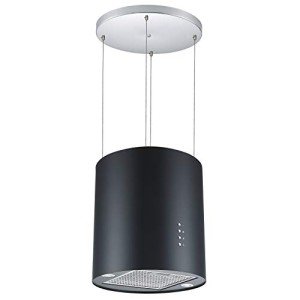The Guide To Island Vent Hood In 2024

How to Aerate an Island Vent Hood
Suspended from the ceiling, an island vent hood assists distribute air and keeps your kitchen without smoke and smells. It's also a stylish feature that boosts your cooking area.
Ventilation types consist of external venting, which pushes air through ductwork to the beyond your home, and recirculating designs that filter and recycle cooking fumes. Some hoods can even be transformed in between one and the other.
Ventilation

Unlike wall-mounted range hoods that vent air vertically through the wall to the outside, island vent hoods use ductwork that goes through the ceiling to tire the cooking area to the outdoors. The distinction is that they can likewise be utilized to recirculate air.
Discover our selection of business and designer custom-made hoods with effective ventilation systems. With adjustable specifications, discover the ideal hood for your kitchen space.
Dacor's ConnectOn auto-responsive innovation switches on the hood and increases the fan speed in action to the cooktop, offering powerful efficiency while using minimal noise. It's just another manner in which you can prepare with self-confidence. Add a touch of modern-day with this stainless-steel pyramid-style wall-mount canopy hood. This hood with dignity accentuates advanced cooking areas that follow a more standard design style and clears the air of smoke, steam and cooking odors.
Style
Unlike wall-mounted range hoods that are installed against the wall, island vent hoods are suspended from the ceiling over an island or peninsula cooktop or range. They also make use of ductwork to tire air out of the home. This design is perfect for kitchens that have a great deal of open area, and it helps to add visual interest to your space. This brand-new home functions Blackberry stained cherry kitchen cabinetry on the parameter, and a natural stacked stone on the island and vent hood to match the Gunstock stain on the cabinets. 10ft ceilings and a skylight help to keep the kitchen intense and roomy.
Noise
While an island vent hood does a terrific task of filtering smoke, grease and smells out of your kitchen, it can likewise produce some noise that disrupts the serenity of your cooking area. Thankfully, there are some strategies you can utilize to minimize this noise and permit you to prepare in peace.
Among the main reasons for excess range hood noise is triggered by fan motor problems such as stiff bearings or badly oiled fans that produce a loud humming sound. Ductwork can also add to this problem especially if the ducts are too small or if they are obstructed with dust.
The best way to decrease noise is to make sure that your vent hood has the highest airflow ranking that you can pay for. The Home Ventilating Institute (HVI) recommends an air flow rate of 100 to 250 cfm for wall-mounted hoods over 30-inch large ranges. This hood should likewise have a multispeed fan to allow lower fan speeds throughout light cooking. extractor hood for island of the easiest methods to lower the sound is to make sure that the ducting is smooth-walled, as corrugated duct limits airflow. You should likewise keep the duct runs as short and straight as possible to prevent any kinking.
Setup
Ventilation of island range hoods is a different procedure than wall-mounted units, considering that they are suspended from the ceiling over an island or peninsula cooktop or range. They typically need a duct that goes through the ceiling and out through the roofing, which can be a complicated job for an unexperienced homeowner.
In addition, they must be installed a minimum of 24-inches to 36-inches above the cooking surface. The height may vary, depending upon the size of the hood and the ceiling. If you have existing ducting and electrical wiring in the kitchen ceiling, this type of vent hood is fairly simple to install. If not, it's recommended that you speak with an expert.
To start setup, make sure the hood can fit through the opening you have chosen for the vent and that it's the right width to accommodate the ductwork and exhaust. If the hood is too wide, it can reduce the efficiency of the vent and will increase noise levels. Next, cut a little hole in the ceiling and utilize a wire cutter to check that there's no pipes or electrical wiring near the hole. If there is, consider employing an expert for the job or changing to a recirculating unit.
If there isn't, you can begin the bigger vent hole by drilling locator holes with a drill and a 1/2-inch masonry bit in each corner of the place. Then utilize a jigsaw to cut the larger vent hole. Finally, include a drywall patch and paint to end up the job. Once the hood is in location, you can run the electrical wiring and connect it to your breaker box. Follow your producer's guidelines for complete installation information.
